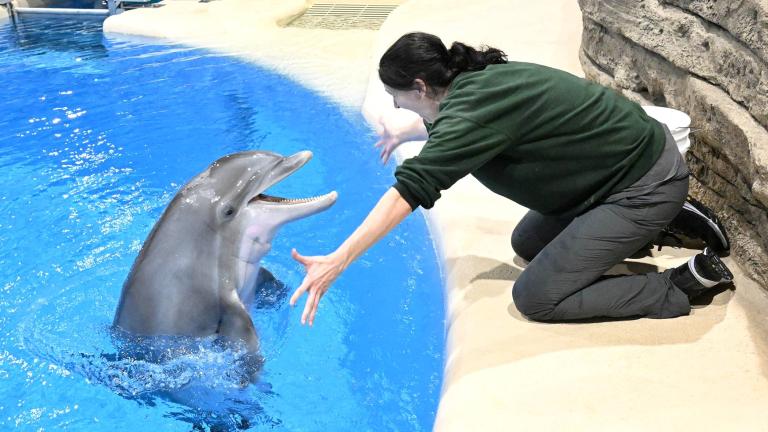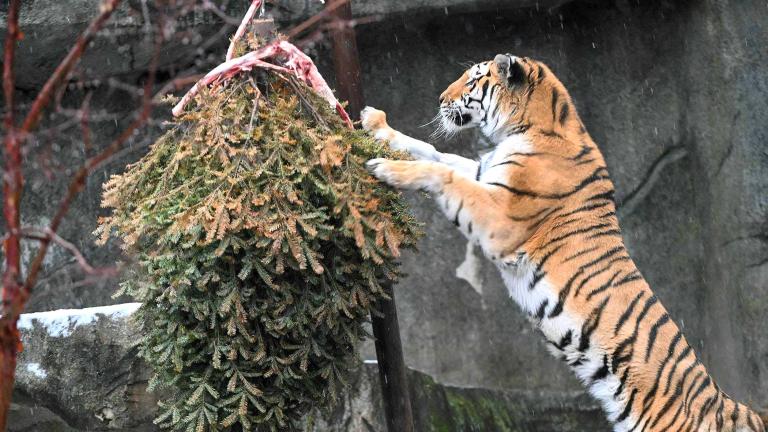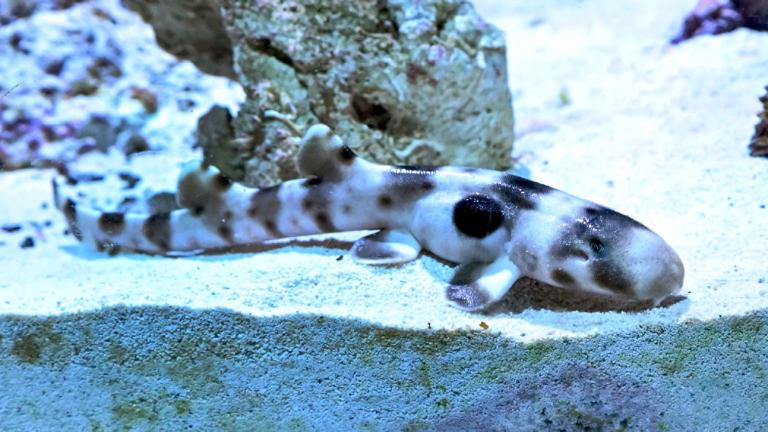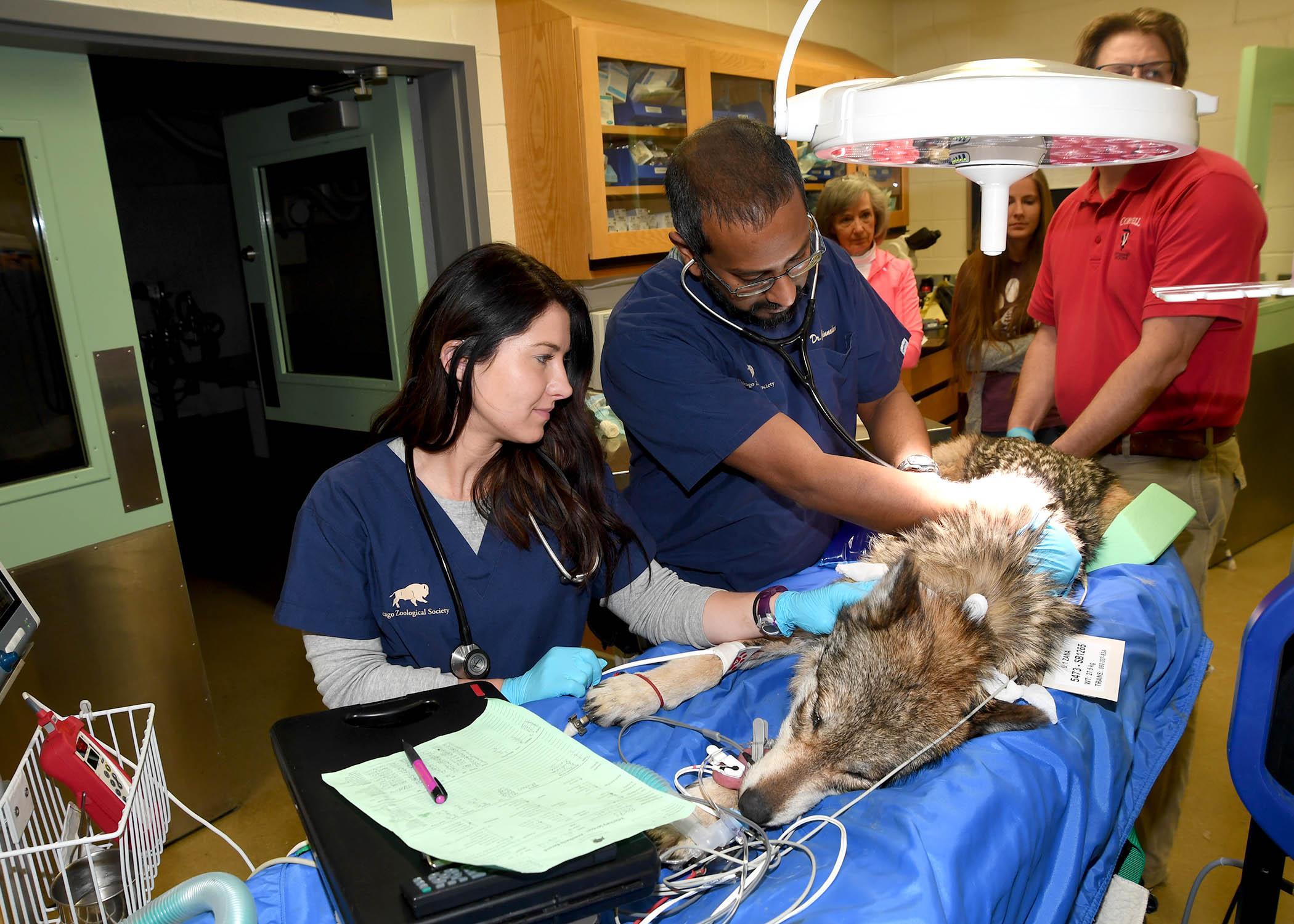 Brookfield Zoo veterinary staff monitor Zana, a 5-year-old Mexican wolf, during an artifical insemination procedure Feb. 4. (Courtesy Chicago Zoological Society)
Brookfield Zoo veterinary staff monitor Zana, a 5-year-old Mexican wolf, during an artifical insemination procedure Feb. 4. (Courtesy Chicago Zoological Society)
Nearly 30 years ago, scientists began collecting semen samples from Mexican wolves and storing them at a sperm bank in St. Louis, hoping the samples could one day be used to help save the troubled species.
But it took until last year to fine-tune the process by which artificial insemination could take place.
On Sunday, veterinary staff at Brookfield Zoo used a sample collected in 2014 to artificially inseminate Zana, a 5-year-old Mexican wolf living at the zoo. It was just the second time the procedure has been performed on the species – the first took place last year at the Endangered Wolf Center in Missouri. Three other attempts are planned for 2018.
Over the next two months, animal care specialists will monitor Zana for signs of a developing pregnancy. If successful, Zana’s litter will help boost the genetic health of the Mexican wolf population, which just a few decades ago was in the single digits.
“These people had enough forethought at the beginning of this program to say, ‘Gosh, these animals are so genetically valuable – let’s start banking,’” said Joan Daniels, curator of mammals at the Chicago Zoological Society, which manages Brookfield Zoo.
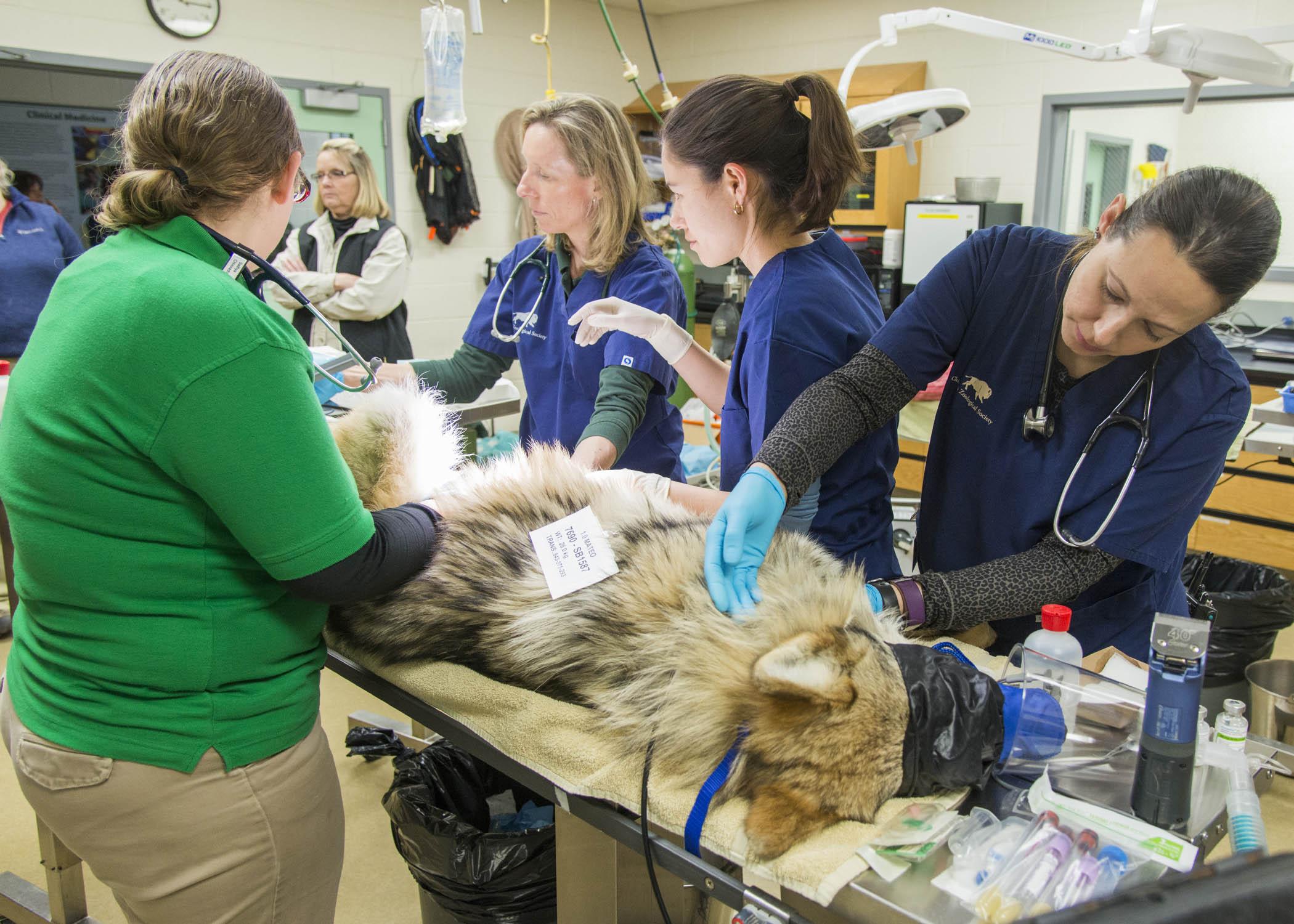 Veterinary staff prepare a Mexican wolf at Brookfield Zoo for a procedure in which his semen will be collected, frozen and banked for future use to help improve the genetic diversity of the population. (Courtesy Chicago Zoological Society)
Veterinary staff prepare a Mexican wolf at Brookfield Zoo for a procedure in which his semen will be collected, frozen and banked for future use to help improve the genetic diversity of the population. (Courtesy Chicago Zoological Society)
For Zana’s procedure, Daniels said a team from the Saint Louis Zoo, where the samples are kept, drove north with tanks of liquid nitrogen to keep the samples frozen. After thawing a sample and conducting tests to make sure it was viable, veterinary staff used a straw to perform the two-hour insemination procedure.
The semen was collected from Redford, a wolf who used to live at Brookfield Zoo. His sample was identified by population management software that was developed several decades ago by CZS population geneticist Robert Lacy and is now used at zoos and aquariums across the country.
“It’s like a matchmaking program,” Daniels said. “It matches them genetically.”
The team also collected semen from the zoo’s seven Mexican wolves, which will be frozen and banked for future use as part of the Association of Zoos & Aquariums’ survival plan for the species.
Zana, meanwhile, was chosen for her relatively young age and because she has proven to be a good mother, Daniels said, having produced three healthy litters with her mate, Flint. Because the two are socially bonded and Mexican wolves mate for life, the chances are extremely high that Flint will accept a litter of puppies that he did not sire, Daniels said.
The zoo will keep Zana and Flint in separate areas for the next few weeks to prevent them from breeding together, a practice that is better for Zana than contraception, which can have negative health impacts, Daniels said.
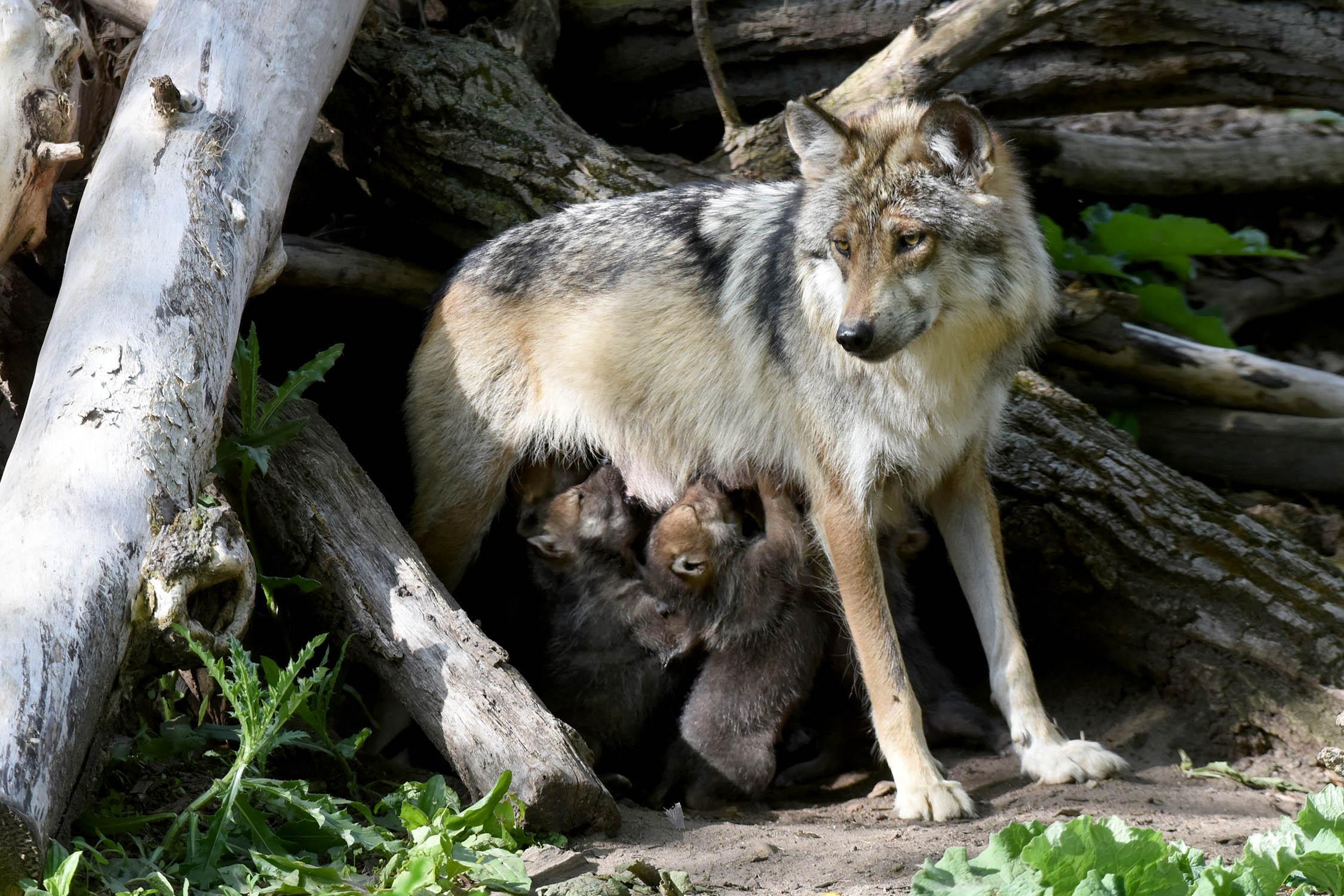 Mexican gray wolf Zana gave birth to five pups in April. Two of the pups were transferred from the zoo and placed in the den of the San Mateo wolf pack in New Mexico. (Courtesy Chicago Zoological Society)
Mexican gray wolf Zana gave birth to five pups in April. Two of the pups were transferred from the zoo and placed in the den of the San Mateo wolf pack in New Mexico. (Courtesy Chicago Zoological Society)
Once staff confirm that Zana is pregnant, she and Flint will be reunited as they prepare to welcome a new litter.
“He’ll think that it’s his litter because he’s very bonded to Zana,” Daniels said of Flint, who is 7. “He’s a very important part of raising puppies. Flint is a wonderful father and protector, and [Zana] would really benefit from being with her full pack when she gives birth.”
Mexican wolves were once common in the southwestern U.S. but were nearly wiped out in the mid-1970s, with fewer than 10 remaining at one point.
Starting in 1998, 11 Mexican wolves were reintroduced to the wild in Arizona after being bred in captivity. Although their numbers have grown, there are still only 281 individuals in captivity, and another 144 in the wild, according to the U.S. Fish and Wildlife Service.
The species is considered an apex predator, or a predator at the top of a food chain upon which no other creatures prey, and the presence of Mexican wolves is vital for maintaining a healthy ecosystem in the southwestern U.S., Daniels said.
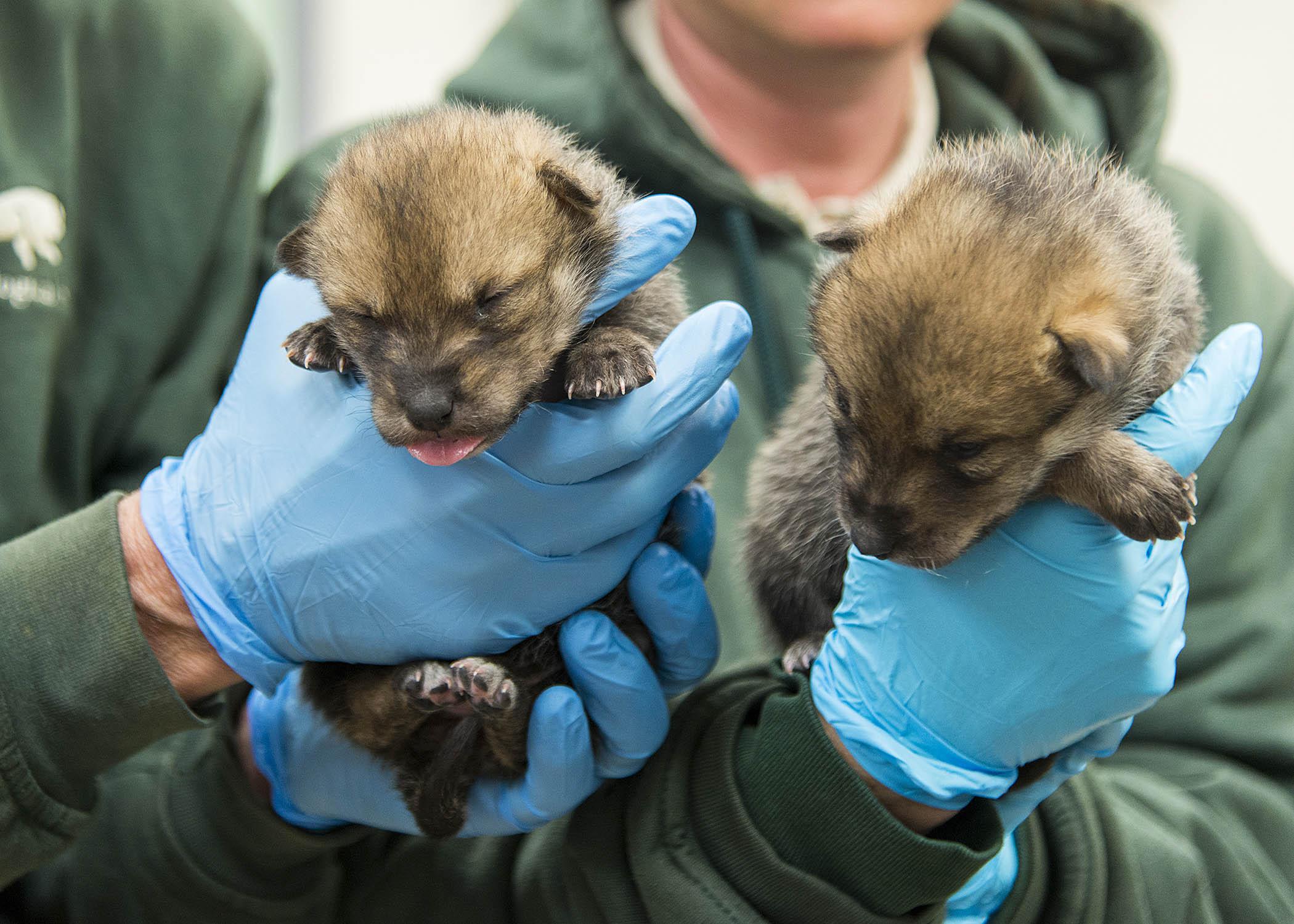 Two wild-born Mexican gray wolf puppies arrived at Brookfield Zoo in May as part of the U.S. Fish & Wildlife Service's recovery program for the species. (Mexican Wolf Interagency Field Team / Chicago Zoological Society)
Two wild-born Mexican gray wolf puppies arrived at Brookfield Zoo in May as part of the U.S. Fish & Wildlife Service's recovery program for the species. (Mexican Wolf Interagency Field Team / Chicago Zoological Society)
Since 2003, CZS has collaborated with USFWS on its Mexican Wolf Recovery Program, facilitating cross-fosterings of puppies born at the zoo and releasing one adult female into the wild, which subsequently had her own litter of pups.
Procedures like the one performed on Zana are increasingly used to maintain animal populations – almost all pandas born now are conceived through assisted reproduction, Daniels said – but artificial insemination using frozen semen is still new for Mexican wolves, and the technique is still being perfected.
Daniels said she hopes Brookfield Zoo’s participation helps advance the science behind artificial reproduction while improving the outlook for Mexican wolves.
“We were really pleased to have an opportunity to help with this,” she said. “It’s a really interesting, pioneering procedure, and hopefully it will help the genetic health of the population.”
Contact Alex Ruppenthal: @arupp | [email protected] | (773) 509-5623
Related stories:
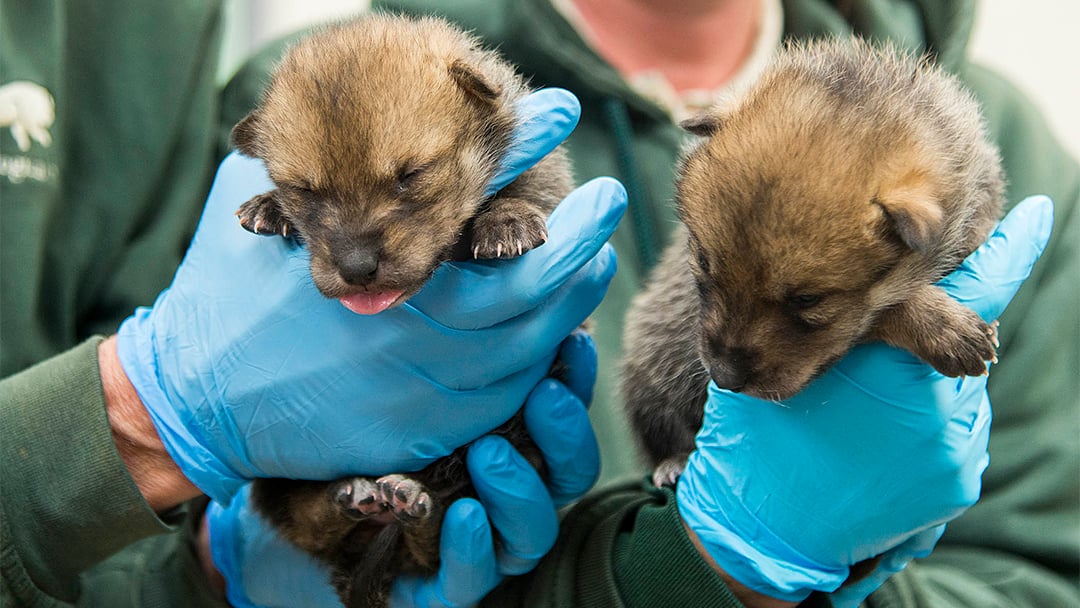 Brookfield Zoo Wolf Released into Wild Found Healthy in New Mexico
Brookfield Zoo Wolf Released into Wild Found Healthy in New Mexico
Nov. 16: A Mexican wolf pup born this spring at Brookfield Zoo and released into the wild as part of a species recovery program was tracked down in New Mexico and is healthy, the zoo announced this week.
 5 Endangered Gray Wolf Pups Born at Brookfield Zoo, 2 Sent to the Wild
5 Endangered Gray Wolf Pups Born at Brookfield Zoo, 2 Sent to the Wild
May 13, 2016: Two Mexican gray wolf pups born at Brookfield Zoo last month were released into the Arizona wilderness as part of a carefully timed conservation effort. The species has been threatened by extinction for over half a century.
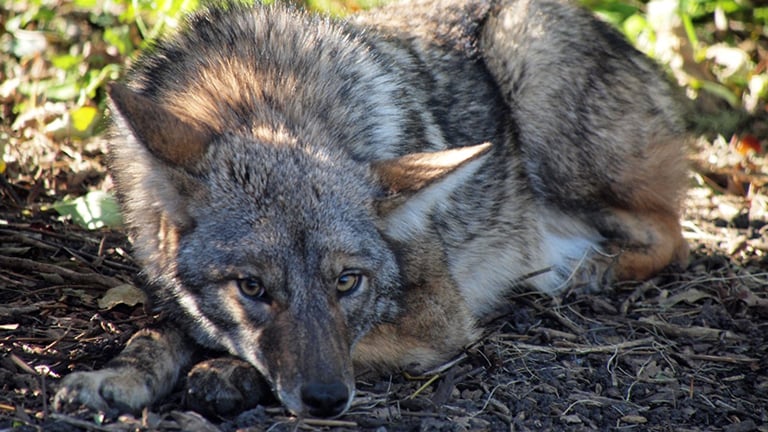 Urban Coyotes Pose a Threat to Pets During Mating Season
Urban Coyotes Pose a Threat to Pets During Mating Season
Feb. 5, 2016: A viewer's video, shared with "Chicago Tonight," shows his encounter with a coyote in Columbus Park while walking his two dogs. Coyote mating season has begun, which means the urban animals may behave aggressively.



